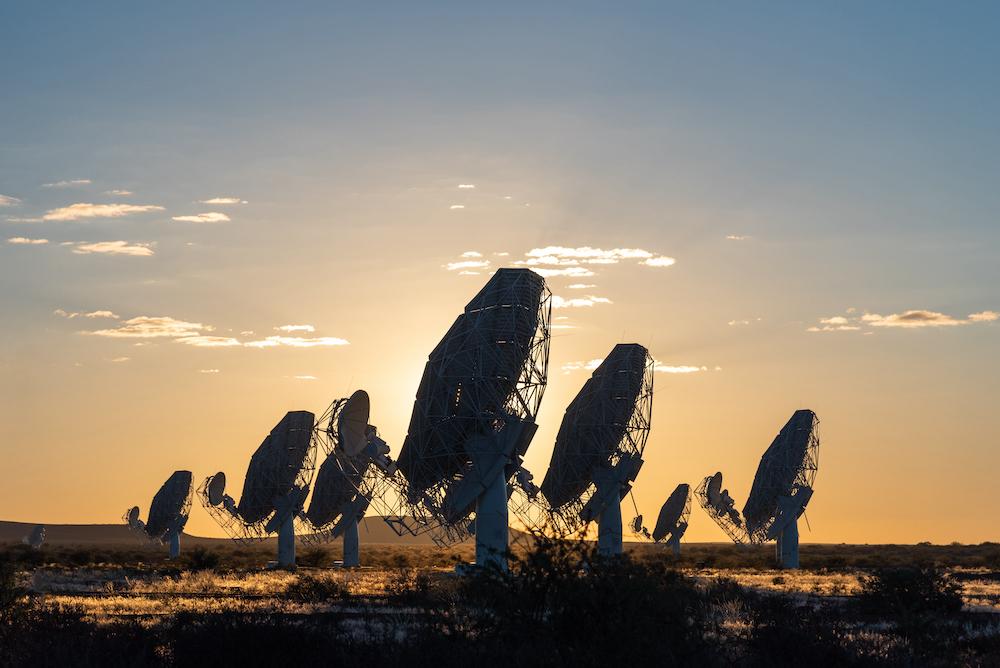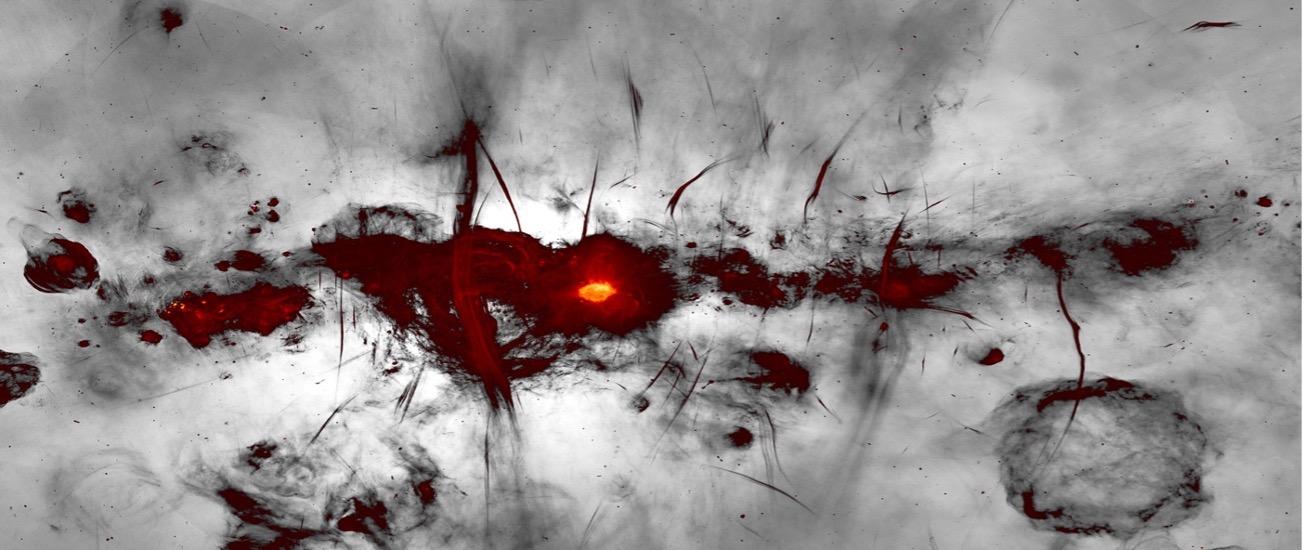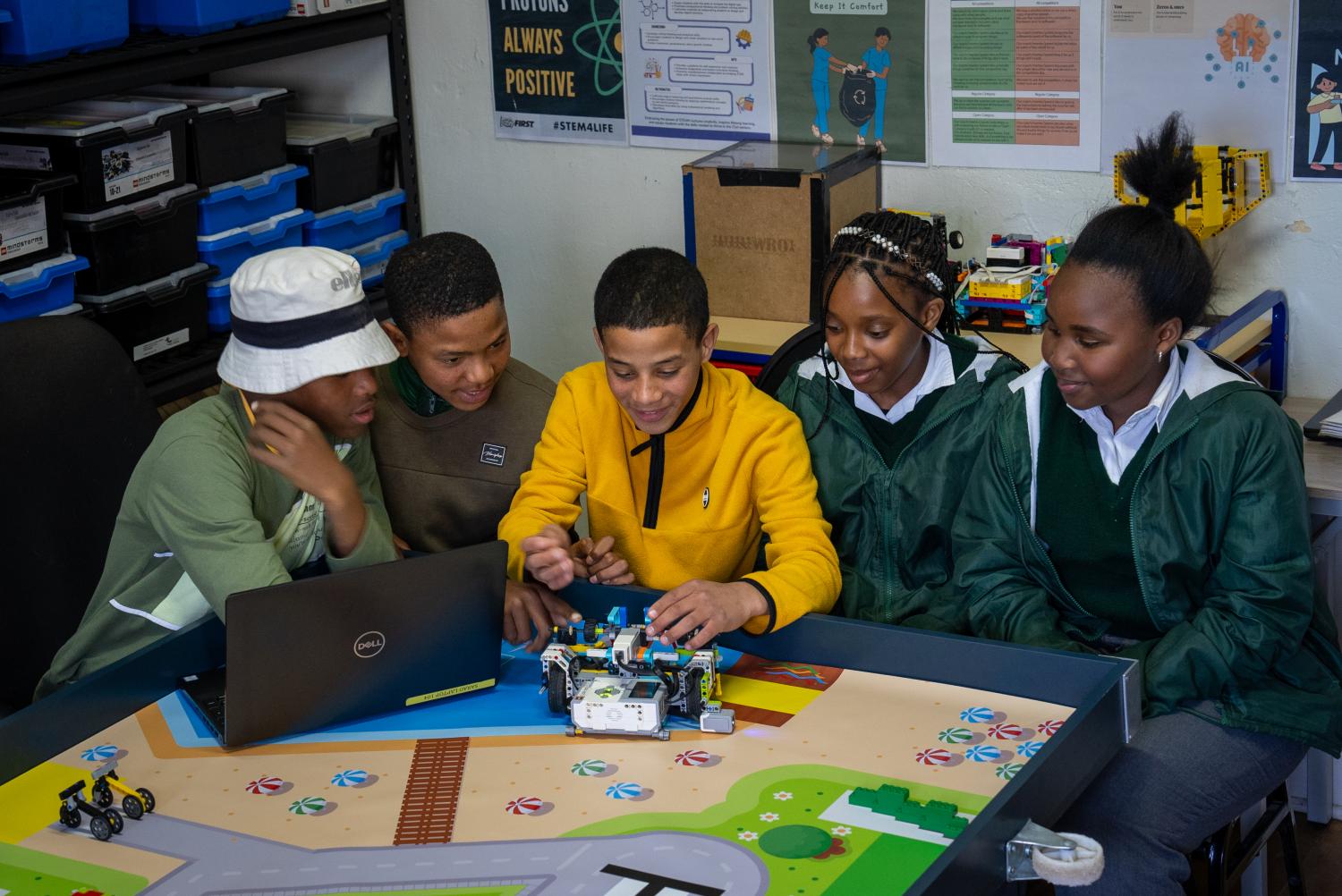South Africa

At a glance
- The South African Radio Astronomy Observatory (SARAO), a national facility managed by the National Research Foundation, coordinates SKA engagement.
- South Africa is home to the SKA precursor telescopes MeerKAT and HERA.
National involvement
South Africa is one of the founding members of the SKAO and its involvement with the project goes back more than two decades.
In 2012, after a nine-year bidding process, South Africa, together with its eight African Partner Countries, was named as the host of the SKA-Mid telescope which will initially be made up of 197 dishes, incorporating the 64-dish MeerKAT telescope.
During the design phase of the telescopes, South Africa was heavily involved in many of the international design consortia, with expert participation across several institutions, universities, and industry partners in the country. A large number of these partners remain engaged during the construction phase, having been awarded construction contracts by the SKAO.
Industrial participation
South African industrial partners are leading the construction of the civil infrastructure of power, fibre networks, and roads for the SKA-Mid telescope, as well as delivering the band 2 receiver for SKA-Mid. This has brought significant investment in the Karoo region both indirectly and directly.
In 2022 the South African Power Adenco Joint Venture was awarded the R890m (~€53 million) contract for infrastructure work on the telescope site, rolling out power, fibre and road networks to connect the dishes spread across hundreds of kilometres. The agreement with the infrastructure partner also contained the requirement from the SKAO of local participation, which sees Power Adenco providing a range of sub-contract opportunities to members of the local communities.
South African companies are also providing high-tech components for SKA-Mid. EMSS Antennas, based near Stellenbosch, has landed the contract to provide the Band 2 receiver for the SKA-Mid dishes. Expertise gathered over the years on the KAT-7, MeerKAT and SKA-Mid receivers has allowed the company to grow and take on contracts from other big telescope projects including the US Next Generation Very Large Array (ngVLA).
Another significant contract went to South African ICT firm Gijima, which is partnering with Nokia to deliver an optical transmission network which will transfer the observational data from SKA-Mid over hundreds of kilometres to the SKAO processing facilities in Cape Town.
Science interests
South African radio astronomy began with the Hartebeesthoek Radio Astronomy Observatory (HartRAO) in 1961 and now has a vibrant radio astronomy community, with South African representatives in 10 out of the 14 SKAO Science Working Groups, including co-chairing positions in the VLBI and Transients groups.
The SKA precursor telescope MeerKAT is a world-leading telescope in its own right, and its development has provided crucial design, assembly and deployment guidance and lessons learned for the SKA project.
The MeerKAT telescope is an array of 64 interlinked dishes spread over a distance of 8 kilometres on the SKA-Mid telescope site in the Karoo. Since its launch in July 2018 the MeerKAT telescope has made scientific discoveries with unprecedented clarity and depth and by mid-2025, more than 500 articles containing MeerKAT data had been published.


Above: Dishes of the MeerKAT telescope, and its famous image of the Galactic centre region. Credit: SARAO; Ian Heywood/SARAO
Wider impact
The astronomy community in South Africa has been blossoming since its involvement in the SKA project. In higher education, SARAO bursaries are supporting a new generation of students into radio astronomy and related fields, with around 1,700 bursaries awarded for undergraduate, master's and PhD study since 2005.
Education across all ages is supported in the towns near the SKA-Mid site where SARAO and the SKAO together help fund early childhood development centres, their first joint initiative. The centres join a suite of programmes which have been funded by SARAO for many years, encompassing primary, secondary and tertiary education.
One notable example is SARAO's extracurricular robotics programme, which has been running in local high schools since 2016 with the goal of igniting a passion for STEM by challenging students to code and programme their very own LEGO robots.

Contact
- SARAO: enquiries@sarao.ac.za
- DSI: veronica.mohapeloa@dst.gov.za
- NRF: info@nrf.ac.za






